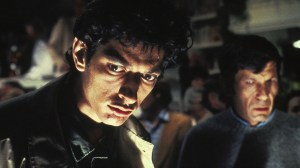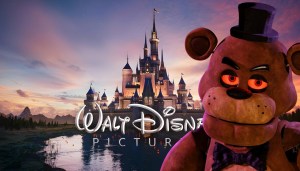This weekend, the Cloverfield franchise did something no movie has ever done: It debuted its first trailer during the Super Bowl and alerted audiences that the movie would be available on Netflix hours later. It was a bold move that assured the film, The Cloverfield Paradox, would be the most talked-about commercial of the entire game while also pushing the franchise’s marketing strategies to a new level. Despite the buzz surrounding the film, the movie itself failed to replicate the previous films’ success, making the disappointment feel all the more potent for fans.
Videos by ComicBook.com
In 2007, fans were bewildered when we saw a teaser featuring a bunch of young, attractive socialites enjoying a surprise birthday party, only to be interrupted by a series of explosions and the head of the Statue of Liberty tossed through the streets of New York City. All we knew was it was a film from producer J.J. Abrams, and the untitled film would be released on January 18, 2008.
Countless rumors flooded the Internet about the film’s subject matter, mainly anticipating the adaptation of a familiar property like Godzilla or Voltron. Instead, audiences got an all-new monster movie told from a first-person perspective thanks to the use of a found-footage format of storytelling with Cloverfield.
The film was a financial success and helped establish Abrams as a mysterious filmmaker, as the TV series he co-created, Lost, was also rich in mysteries that fans tried to explore together online. Fans of Cloverfield spent years trying to piece the clues together about the film, but with years of silence, interest in the franchise dwindled.
In January 2016, a trailer emerged for a film about Howard Stambler (John Goodman) seemingly keeping two captives in his underground bunker, with his motivations and connections to the characters unclear. The film’s title, 10 Cloverfield Lane, alerted audiences to this film having a connection to the 2008 monster movie, which would hit theaters two months later. No other trailer for the film appeared before its theatrical release.
Rather than a massive monster movie, 10 Cloverfield Lane gave audiences a compelling thriller with only three lead parts, all bouncing off one another perfectly. By the film’s closing credits, there were some passing connections to the previous film, yet some discrepancies had many audiences wondering whether they’d seen a sequel, a prequel, or the elusive “side-quel,” with as many answers to the question as there are viewers.
The Cloverfield Paradox, which was previously known as “God Particle,” shows the crew of a space station hoping to discover a solution to Earth’s energy crisis. Their actions could pose a threat to their planet, and reality, as they know it, featuring a series of bizarre and horrific incidents on the vessel, known as “Cloverfield Station.”
Much like the previous film in the franchise, Cloverfield Paradox required no knowledge of the other films in the series, as it was a self-contained story. The film also continued the tradition of leaning into sci-fi/thriller tropes that helped inspire the previous two films, feeling far more like a straight-to-video sci-fi film from the ’90s than a fresh take on familiar tropes.
In the hours since its release, Paradox hasn’t been universally slammed, with over 60 percent of users on Rotten Tomatoes giving it a positive reaction. Critically, however, the film sits at a mere 16-percent positive reaction with over 40 critical reviews submitted.
The Cloverfield Paradox is far from a total trainwreck, as there are some nuggets of good ideas and sequences that pop up throughout, as well as some strong performances from talented actors who you wish had gotten a stronger script. Were the film to have been released as one of its original titles, it would have been forgettable and harmless while audiences forgot about it days later.
The most frustrating element about the film is that it was so clearly written as a standalone film that had “Cloverfield” tacked on to its title. None of the main characters ever use the word “Cloverfield,” yet multiple radio transmissions make sure to let you know the station’s title. The film also features a B-plot of a crew member’s husband on Earth encountering chaos created by a monster similar to the original film, yet nothing he does has an impact on the events unfolding on the space station.
Following the release of 10 Cloverfield Lane, the connections between the films were somewhat vague, yet Paradox writer Oren Uziel helped explain what the brand represents in regards to subject matter.
“Other than knowing what kind of quality and feel you’re gonna get from something that’s coming out of Bad Robot and J.J.,” Uziel told Collider. “It just sort of helps to give an understanding of like, ‘Okay I understand what type of movie this is gonna be.’ As far as specifics, I don’t think there is one specific thread that makes it a Cloverfield movie, I guess.”
Prior to Paradox‘s release, fans knew that any film with the Cloverfield title would be an enthralling tribute to familiar sci-fi and horror stories that would utilize unique marketing campaigns that heightened the experience of the film. Paramount unloading the film to Netflix with a surprise release was surely fascinating, as it fulfilled half of what we expect from the franchise, yet the failure to provide a sci-fi film anywhere near as strong as the first two chapters has fans doubting the future of the Cloverfield stamp of approval.
The Cloverfield Paradox is streaming on Netflix now.








